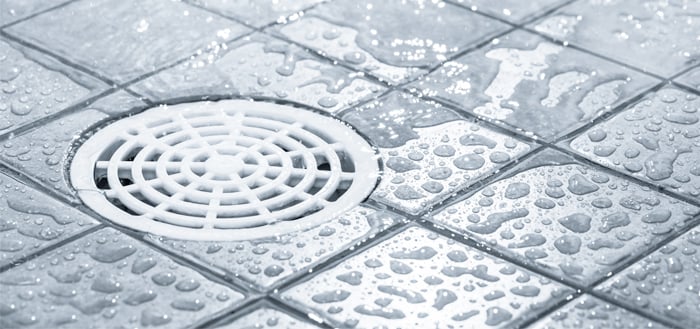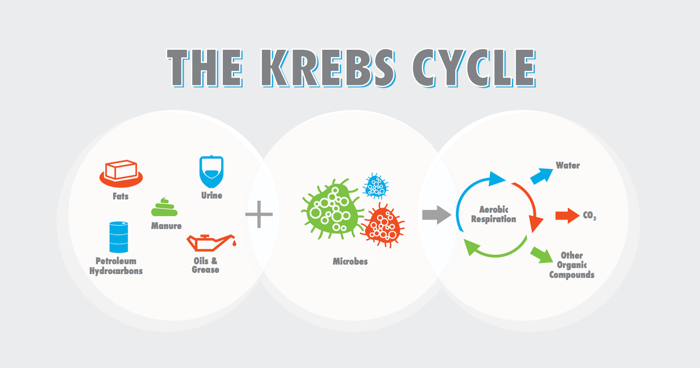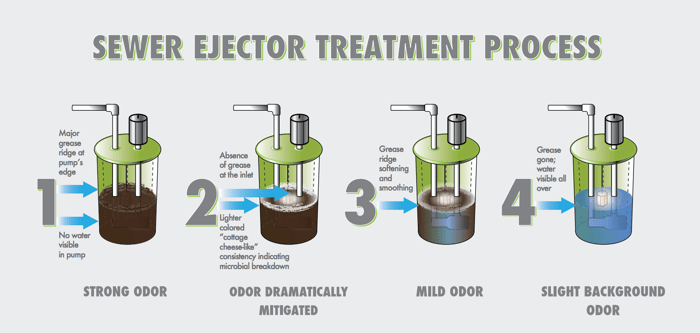
By: Briana Smith | February 20, 2014
What are Microbes?
Microorganisms, or microbes, are present everywhere and in practically everything. They are in the air we breathe, the water we drink, the soil we walk upon, not to mention pretty much everything in between. There are trillions of different types of microbes and they fall into six major categories: bacteria, fungi, viruses, protozoa, algae & archaea.
Typically when microbes are referenced in the cleaning industry they’re either beneficial or harmful. Beneficial microbes include the bacteria in bioactive maintenance products that are used in the bioremediation process. Harmful microbes include the bacteria, viruses and fungi that can cause healthcare-associated infections (HAIs), illnesses like the flu, and other disease-causing pathogens.
How Does the Bioremediation Process Work?
Microbes process their 'food' similar to how we do. They look for their preferred food source, in this instance that consists of fats, oils, grease, urine, manure, petroleum hydrocarbons, other organic waste materials, etc. Then they digest it through a process called aerobic respiration meaning that they need oxygen present to work, which provides them with energy to move around. And then, as with most creatures on earth, they get rid of the waste, except that in the microbes case their waste is water, carbon dioxide and any other organic compounds that they simply don’t need to function. This entire cycle is what's known as the Kreb's Cycle in microbiology.

Microbial Cleaning Solutions
Just like people, microbes have different favorite foods that they like to eat. So while you might prefer hamburgers with fries on the side, some microbes prefer petroleum hydrocarbons, or grease, or manure, etc. This is why there are bioactive maintenance products for different applications. You can target what you want to clean by choosing a product that contains microbes specifically for that cleaning application. So if you work at an auto body shop, your mechanics' bays probably have a build-up of petroleum hydrocarbons that you need cleaned up. In which case, you'll want to use something like WAXIE's Bio-Active Petroleum Cleaner, which is formulated to rapidly digest petroleum hydrocarbons, including chlorinated solvents.
This is how the bioremediation process works with microbial-based cleaning products. Using microbes also means that you are cleaning with a reduced environmental impact, as you are using nature's cleaners with more natural byproducts (mainly oxygen & carbon dioxide).
Bioactive maintenance products are also fantastic at getting rid of grease and oils stuck in drains and pipes in an environmentally safe manner. While it may take several treatments, microbial drain cleaners can clean out the grease and gunk out of your sump pump or sewer ejector system, allowing it to run better and by further removing pollutants found in the wastewater.
Now What About Enzymatic Cleaners?
Now you may have also used enzymatic cleaning products, which are a little different than microbial-based cleaners, although some microbes produce enzymes. Unlike microbes, enzymes are not living organisms. They are actually a sting of proteins that help break down organic materials by shredding them into smaller pieces, similar to how you use a knife and fork to cut up your dinner into smaller, more edible pieces. So basically enzymes allow the microbes to process their food faster. That's why it's best to use a bioactive maintenance product that has a combination of microbes and enzymes, as opposed to just enzymes.

Examples of Microbes Doing Their Work
Microbial-based products have been used to successfully clean-up many types of things. For example, there were microbes present in the Gulf of Mexico during the Deepwater Horizon oil spill back in 2010. Cleanup crews used chemical dispersants to break up the oil, much like how enzymes can shred organic waste. This allowed for several strains of petroleum hydrocarbon eating microbes already existent in the water to do most of the cleanup's heavy lifting.
Also, more recently, the city of San Diego, CA hired a local contrator to remove layers of bird droppings on the cliffs of La Jolla Cove, that was causing a horrible stench when the wind blew inland, using a microbial product that digests the waste thus eliminating the odor. Environmental concerns were of utmost importance as wildlife was not to be disturbed, and as La Jolla cove is an ecological preserve. These microbes got rid of the problem safely and in only a couple of treatments. La Jolla will most likely have to undergo this again in the future, as the birds are not going anywhere soon, but in the meantime life is much nicer for everyone in the area: birds, sea life & humans!
Briana Smith is WAXIE’s Social Media & Product Branding Specialist and spends quite a bit of time skimming the news for what’s new in cleaning, sustainability and technology while managing all of WAXIE’s social channels. She especially loves posting about #teamwaxie activities & conversing with customers on Instagram. Briana has a Bachelor's Degree in Communication Design from California State University, Chico.
READ MORE:
Drain Cleaning & Maintenance
La Jolla Light - City Finally Begins Cleaning Bird Waste on La Jolla Cove Cliffs
Microbiology Online - Introducing Microbes
Scientific American - Slick Solution: How Microbes Will Clean Up the Deepwater Horizon Oil Spill



